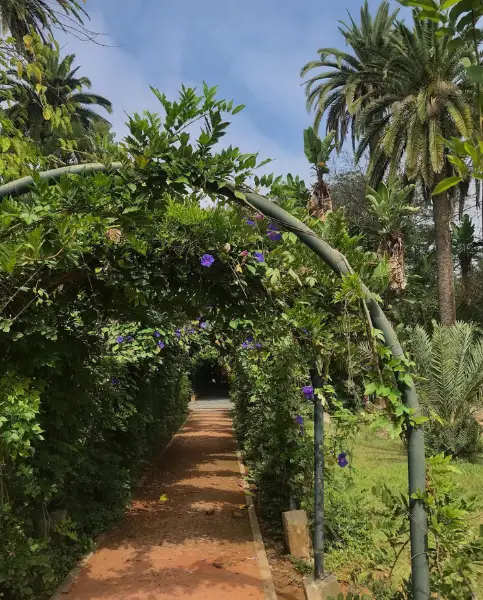


Behind its status as the administrative capital of the kingdom, royal residence, and political and diplomatic ballet hides Rabat the sweet bathed in the lights of knowledge and culture. Its body refreshed in the waters of the river Bouregrag, and feet soaked in the waves of the Atlantic, Rabat seems young and modern, however it draws its identity from the background of history where its roots are nourished in the depths of the 12th century. In Rabat, as in many places in Morocco, we are simultaneously in history and modernity. We never tire of strolling through its large green spaces, parks, zoo, on the esplanade of the Hassan tower to rediscover the glorious history of Yacoub El Mansour, meditate on the graves of kings Mohamed V and Hassan II in the nearby mausoleum, cross the road and enter through the great gate the kasbah of Oudayas on the edge of the Bouregreg and rejoice eyes at the view of the fresh waters of the river mix with those salty of the nearby Atlantic Ocean.
Rich in an ancient architectural ensemble, Islamic, Hispanic, European, discover the historical riches around this city such as the archaeological city of Chellah and the nearby historic city of Salé (founded in the eleventh century) on the other side of the river Bouregreg, immerse yourself in the atmosphere of the old medina behind its ochre walls, and emerge from it by strolling along the modern avenues of the city center or Agdal.
Also city of knowledge, it has several universities, institutes, high schools and various educational centers, also welcoming students from foreign countries. During your stay, many monuments, museums, exhibition galleries, etc... await your visit to Rabat, now called the city of lights, a name that is associated with other titles of administrative capital and imperial city.






-rabat_1738935033.webp)



In Rabat, it is on the archaeological site of Chellah that we find the trace of man in the 8th century before Jesus Christ. But the history of Rabat begins in the era of the Almohads having been founded under their dynasty in the 12th century. They built a citadel, a mosque and a residence, all forming a ribat (fortress or camp) which later became the Kasbah of the Oudayas. This ribat gave the current name Rabat from Ribat Al Fath (victory camp) where the expeditions of fighters went on conquest.
Yakoub El Mansour later expanded the city by surrounding it with walls. He died in 1199. Around 1269 under the Merinid dynasty, Fez became capital again and Rabat’s decline was announced. Deserted by its inhabitants, it begins to repopulate in the early seventeenth century when thousands of expelled Moors from Andalusia settle there. During the protectorate era in 1912, France made Rabat the seat of the general residence and capital of the French protectorate, a title that it will keep from the independence of Morocco in 1956 until today.
